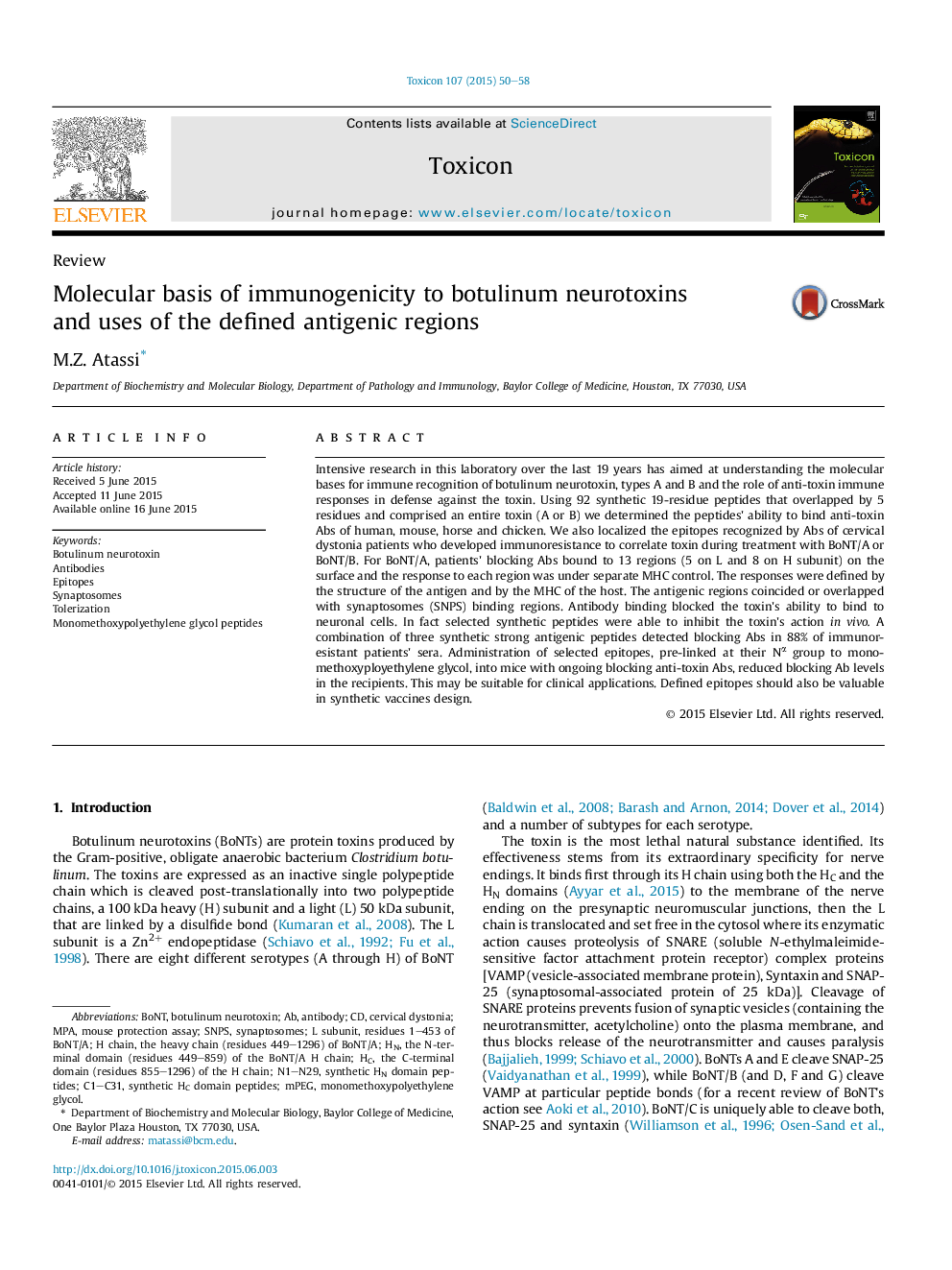| کد مقاله | کد نشریه | سال انتشار | مقاله انگلیسی | نسخه تمام متن |
|---|---|---|---|---|
| 2064338 | 1076837 | 2015 | 9 صفحه PDF | دانلود رایگان |
Intensive research in this laboratory over the last 19 years has aimed at understanding the molecular bases for immune recognition of botulinum neurotoxin, types A and B and the role of anti-toxin immune responses in defense against the toxin. Using 92 synthetic 19-residue peptides that overlapped by 5 residues and comprised an entire toxin (A or B) we determined the peptides' ability to bind anti-toxin Abs of human, mouse, horse and chicken. We also localized the epitopes recognized by Abs of cervical dystonia patients who developed immunoresistance to correlate toxin during treatment with BoNT/A or BoNT/B. For BoNT/A, patients' blocking Abs bound to 13 regions (5 on L and 8 on H subunit) on the surface and the response to each region was under separate MHC control. The responses were defined by the structure of the antigen and by the MHC of the host. The antigenic regions coincided or overlapped with synaptosomes (SNPS) binding regions. Antibody binding blocked the toxin's ability to bind to neuronal cells. In fact selected synthetic peptides were able to inhibit the toxin's action in vivo. A combination of three synthetic strong antigenic peptides detected blocking Abs in 88% of immunoresistant patients' sera. Administration of selected epitopes, pre-linked at their Nα group to monomethoxyployethylene glycol, into mice with ongoing blocking anti-toxin Abs, reduced blocking Ab levels in the recipients. This may be suitable for clinical applications. Defined epitopes should also be valuable in synthetic vaccines design.
Journal: Toxicon - Volume 107, Part A, 1 December 2015, Pages 50–58
